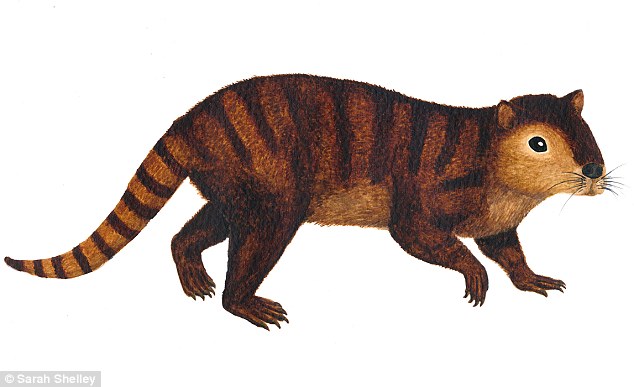-
Tips for becoming a good boxer - November 6, 2020
-
7 expert tips for making your hens night a memorable one - November 6, 2020
-
5 reasons to host your Christmas party on a cruise boat - November 6, 2020
-
What to do when you’re charged with a crime - November 6, 2020
-
Should you get one or multiple dogs? Here’s all you need to know - November 3, 2020
-
A Guide: How to Build Your Very Own Magic Mirror - February 14, 2019
-
Our Top Inspirational Baseball Stars - November 24, 2018
-
Five Tech Tools That Will Help You Turn Your Blog into a Business - November 24, 2018
-
How to Indulge on Vacation without Expanding Your Waist - November 9, 2018
-
5 Strategies for Businesses to Appeal to Today’s Increasingly Mobile-Crazed Customers - November 9, 2018
Rodent-like mammal survived dinosaur extinction
Judging by the shape of his front teeth, the beast was following a purely herbivorous diet, which was not at all typical of the ancient beasts. For a brief period of time, after dinosaurs left the stage 66 million years ago, these prehistoric beavers and their rodent-like relatives were the largest animals on earth.
Advertisement
This type of mammal, known as a multituberculate, first arose roughly 100 million years prior to the extinction of the dinosaurs, and somehow managed to survive the events which killed off the once dominant creatures.
After the extinction of the dinosaurs, researcher Sarah Shelley notes, new mammalian groups began to evolve, developing more specialized adaptations which allowed them to diversify and outgrow other more generalized early mammals.
Uncovering the new species, known as Kimbetopsalis simmonsae, has helped scientists update the mammals’ family tree.
With no dinosaurs to hunt them or compete for food with, these primeval beaver-like creatures were free to spread through what is now Asia and North America, living in rivers, lakes, and forests. Kimbetopsalis was among the few to survive the catastrophic events that ultimately changed the course of history and made the world into what it is today.
Carissa Raymond, a student in the team of Dr Stephen Brusatte from the University of Edinburgh found the fossil while prospecting at a site in New Mexico, US.
‘It may be because they were among the few mammals that were already well-suited to eating plants when the extinction came.
Dr Thomas Williamson of the New Mexico Museum of Natural History and Science, who led the research, said: “Finding this new mammal was a pleasant surprise”.
The new mammal was a multituberculate, a group of mammals that Brusatte describes as “basically primitive versions of rodents”.
The group finally died out a few 35 million years ago and was replaced by emerging rodents.
About the size of a domestic cow, the plant-eater had bulbous tumour-like growths sprouting from its head and bony armour down its back. “It helps fill an important gap in the record of this group of mammals”, he said.
“It helps us better understand which multituberculates were able to survive and then thrive after the dinosaur extinction”. This would eventually give rise to modern humans, millions of years later.
Advertisement
‘It shows just how quickly mammals were evolving in that fearless new world after the asteroid cleared out the dinosaurs. Scientist are unsure why they ceased to exist, but they assume it’s because rodents were more intelligent or reproduced more quickly.




























